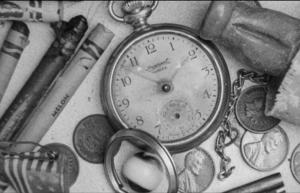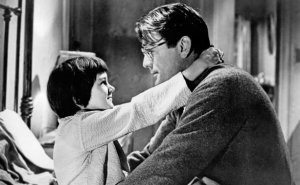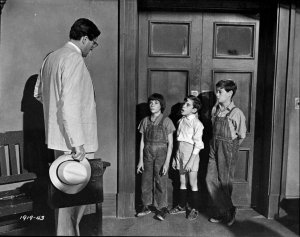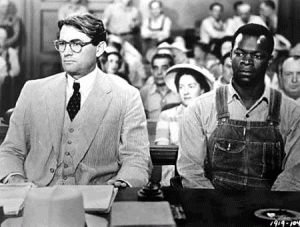To Kill A Mockingbird, directed by Robert Mulligan, remains a rare and classic gem. Adapted from Harper Lee’s literary masterpiece of the same name, it defies the frequent book-to-film disappointment, and is undoubtedly the perfect visual complement. Mockingbird’s success stems in its precise recapture of the novel’s prominent themes of tolerance, compassion and civility. Every scene is purposeful, and conveys the book’s essence through emotionally powerful performances and imagery.
Set in 1932, in Maycomb, Georgia, the typical sleepy town. The town’s “old and tired” look is represented through a plethora of cinematic techniques. The deliberate use of black and white cinematography, a style that was slowly becoming a rarity at the time the film was made in 1962, was a valuable element to emanate nostalgia. Lapses of silence are vital in maintaining the slow pace of the town, and in enhancing moments of substantial volume, like the stunning sound of a gunshot that jolts Scout while waiting Jem to return from the Radley house. Dream-like dissolve editing mimics the seemingly endless days that adult Scout describes. Lighting nuances come alive in the frequent night scenes. The silhouettes of the actors and trees almost transform the shadows into their own characters. The realistically stellar performances from the actors (the fact that both of the characters Scout and Jem, were played by inexperienced actors from Alabama, Mary Badham and Phillip Alford, fostered this realism), is seldom duplicated. There is equal measure of humanity, and depth evoked from each character.
The storyline occasionally employs voice-over narration from an adult Scout, respecting the first-person style in the novel, as transitional points between periods of time. The shots are mostly tight medium, to medium long shots, depicting the intimacy, whether loving or intense, between the characters. Camera angles remain traditional. But there are slight low angles that suggest the heroic stature and the children’s patriarchal view of father Atticus Finch (Gregory Peck in arguably his most iconic and revered roles). Prime examples include: the African American courtroom attendants standing in honor of Atticus’s unflinching and keen testimony of Tom Robinson’s innocence; and Atticus’s and Scouts porch swing conversation.
The title sequence is exquisite. It begins with a close-up of a cigar-like box in a soft, black and white filter. Then a child’s hands (presumably Scouts) open it to reveal a myriad of knick-knacks. For a while there is not much sound, but a child sighing and blithely humming. Then the score enters. A bitter sweet, evocative and sweeping orchestral sound, with hints of accordion, playing atop somnolent dissolve edits of the box’s objects and the child drawing, fading out as the story begins, setting the stage for some of film history’s most beloved scenes of all time.
review for my FMS 621 class



